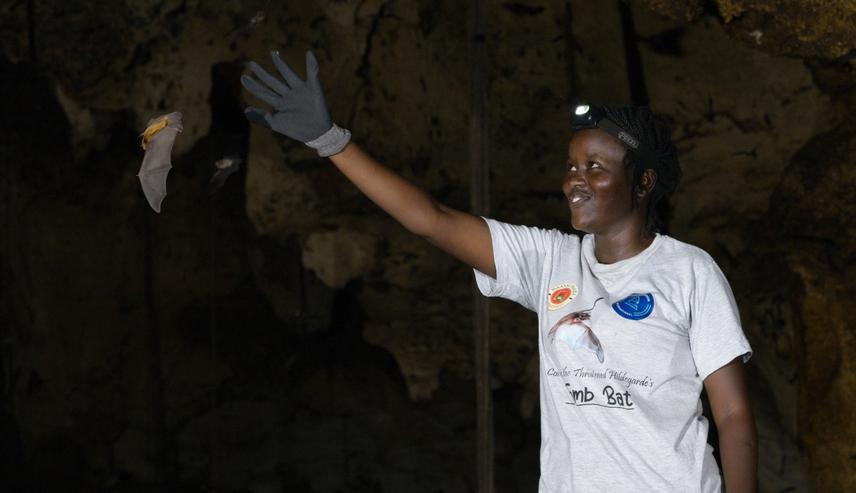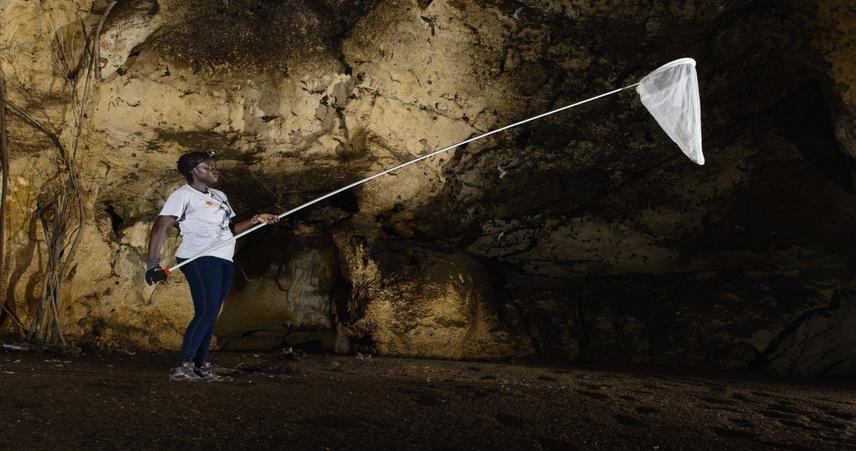Millicent Jepkorir Bungei
Our project aims to develop a comprehensive Bat Cave Vulnerability Index (BCVI) specifically tailored for the diverse bat species inhabiting Kenya, where bats are crucial for ecosystem health as pollinators, seed dispersers, and insect controllers. Despite their ecological importance, bat populations globally face threats from habitat loss, climate change, pollution, and direct persecution. In Kenya, known for its rich biodiversity and varied ecosystems, bats find refuge in caves that serve as essential roosting sites, breeding grounds, and hibernacula. Yet, these habitats are increasingly endangered by human activities such as cave disturbance, guano mining, and tourism.

Close encounter with Taphozous bat species at Makuruhu cave. ©Karel De La Cruz.
The study will focus on selected underground bat roosts across three key Kenyan regions: coastal Kenya, western Kenya, and the Rift Valley. Each region is chosen for its unique ecological characteristics and biodiversity, which are ideal for conducting a comprehensive cave vulnerability assessment. In each region, at least three caves will be selected, especially those within protected areas and community lands. Bat sampling will be conducted using a hand net within accessible caves to identify and document species presence. Additionally, to compile a local reference call library, captured bats will be released outside the caves to record reference calls.

Photo with the entire team after a successful community workshop. ©Karel De La Cruz.
Acoustic sampling will also be utilized to assess bat species richness in selected caves. At each site, bat echolocation calls will be recorded over two consecutive nights using two automatic bat detectors (song meter SM4BAT FS-Wildlife acoustics, Massachusetts, USA), from dusk to dawn. The project aims to achieve several important objectives for bat and cave conservation: assessing anthropogenic activities within and around bat caves, comparing bat species richness among selected caves, identifying bat species of conservation concern, and mapping priority cave roosts. Additionally, there is a strong emphasis on disseminating the findings as widely as possible; Firstly, by publishing in an international, high-impact, peer-reviewed journal focused on conservation to reach the scientific community. Secondly, by presenting these findings at various domestic and international conferences. Furthermore, the project includes organizing three significant workshops in the research regions to facilitate direct communication with stakeholders, community leaders, and representatives, enhancing information sharing, discussions, and feedback.

Millicent trapping bats for identification at Makuruhu cave in Watamu. ©Karel De La Cruz.